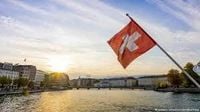In a significant move to address labor shortages and promote integration, Swiss authorities are expanding educational opportunities for qualified refugees, allowing them to enroll in universities and higher education institutions across the country. This initiative not only aims to tackle the growing demand for skilled labor but also seeks to harness the potential of refugees who possess the necessary competencies.
The State Secretariat for Migration (SEM) announced that, through a collaborative pilot program, Swiss universities are joining forces with the SEM to enhance the chances of recognized refugees and temporarily accepted individuals in pursuing higher education in Switzerland. With an initial funding of 1.5 million Swiss francs, the program is set to run over the next four years, providing a pathway for refugees equipped with the right skills to access educational institutions.
As part of this initiative, five projects have been selected for the pilot phase, proposed by prestigious universities in Basel, Lausanne, Lucerne, and the Swiss Federal Institute of Technology Zurich. These projects aim to prepare graduates for higher education through intensive language courses and guidance sessions about the Swiss education system.
The program is designed to be inclusive, targeting refugees from all linguistic regions of Switzerland, and it encompasses all types of higher education institutions, whether specialized or academic. This reflects a broader commitment from the Swiss government to support the integration of qualified refugees into society, leveraging their skills to meet local labor market needs and enhance the national economy over the long term.
In tandem with these educational reforms, Switzerland has also recently unveiled a new passport that is being hailed as a work of art. The latest iteration of the Swiss passport, launched in autumn 2022, is not only visually striking but also enhances security. Designed by the Geneva-based studio RETINAA, founded by Carl Gylon and Guillaume Peterknecht, the passport showcases a blend of innovation, graphic precision, and deep symbolic meaning.
Since its introduction in 1959, the Swiss passport has been a symbol of elegance and security. The new design incorporates a narrative that explores the essential role of water in shaping Switzerland's natural landscapes, which include over 1,500 lakes and glaciers. This concept is further emphasized by the country’s identity as the "water tower of Europe," creating a visual journey along waterways from the peaks of the Alps to the valleys below.
From an aesthetic perspective, the passport design integrates traditional cartographic elements with modern 3D modeling techniques. Under ultraviolet light, contour lines and architectural landmarks emerge, reflecting the cultural heritage of Switzerland. This combination of graphic and technological elements not only enhances the reliability of the passport but also transforms it into a contemporary work of art.
As Switzerland embraces these innovative changes, both in its educational policies and national identity symbols, it demonstrates a forward-thinking approach to integration and security. The simultaneous efforts to open doors for refugees and to create a visually striking passport highlight the country’s commitment to blending tradition with modernity.
These initiatives also signify Switzerland's recognition of the contributions that refugees can make to society. By facilitating access to higher education, the government is not just addressing a labor shortage; it is also fostering a diverse and skilled workforce that can drive economic growth. This approach aligns with the values of inclusivity and opportunity, which are integral to the Swiss ethos.
In conclusion, Switzerland's dual initiative of integrating refugees into higher education while launching a new, artistically designed passport showcases the nation’s commitment to progress and inclusivity. As these programs unfold, they promise to enrich Swiss society and economy, ensuring that the country remains a leader in both humanitarian efforts and innovation.



